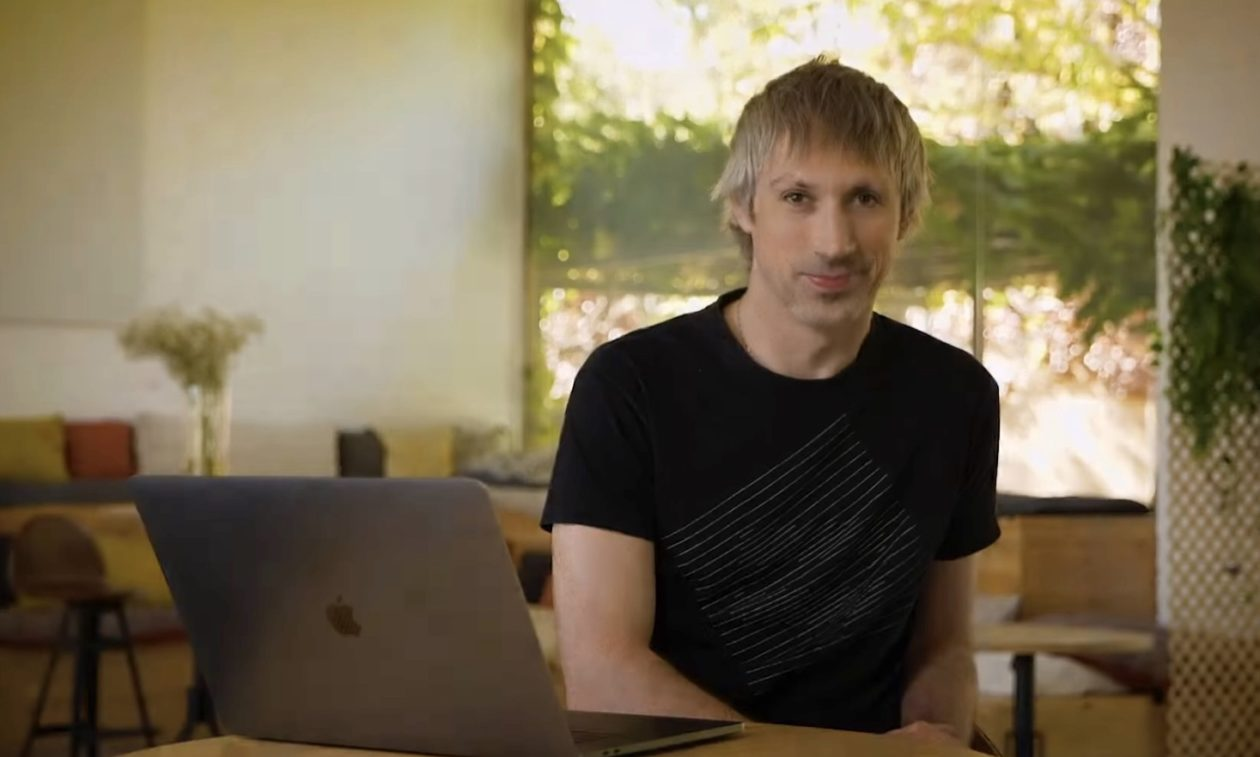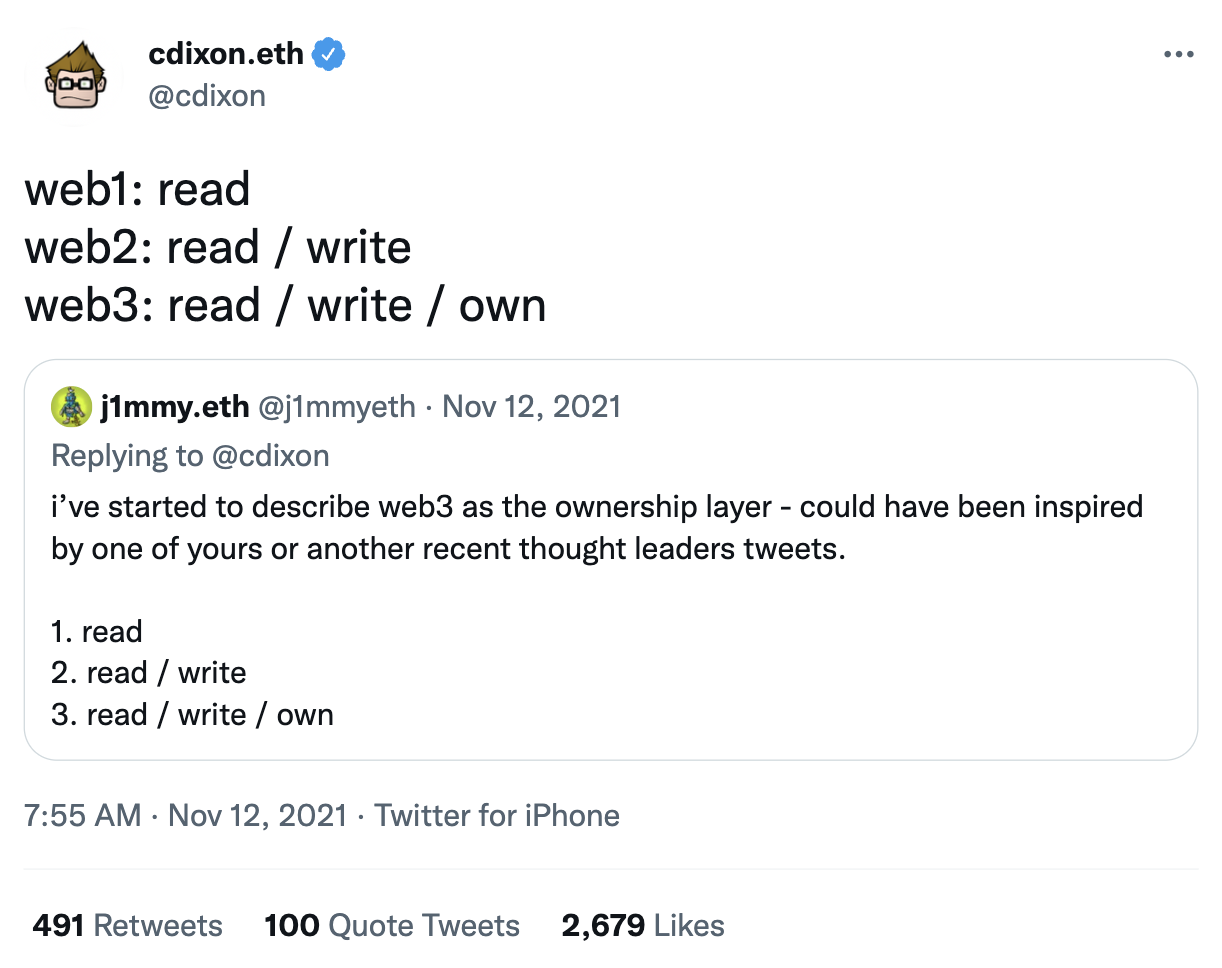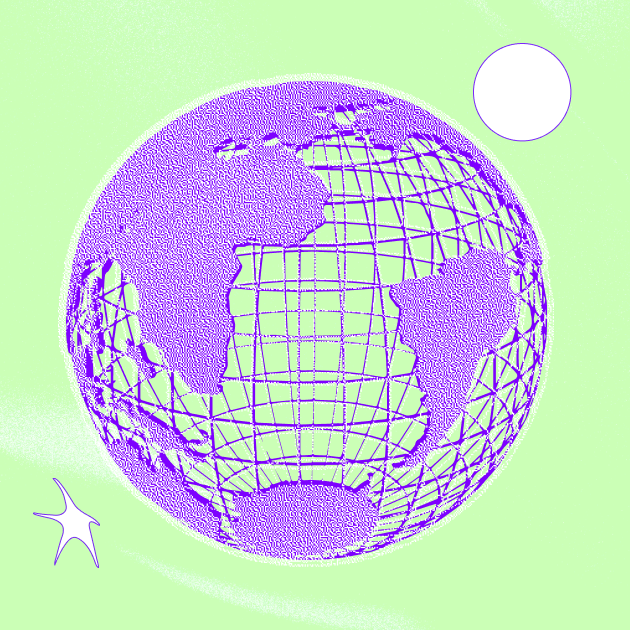If you love crypto and NFTs then you're also closely acquainted with “Web3” (or Web 3.0), the next phase of the web in which blockchain technology will play a foundational role.
Sadly, you've also likely seen the term diluted and ground down to little more than empty jargon–Elon Musk has even called it a marketing buzzword and Jack Dorsey dismissed it as a gimmick used by venture capital firms.
But when used properly, the term Web3 has substance. The definition misattributed to the man who coined the term, Polkadot founder and Ethereum co-founder Gavin Wood, is “a decentralized online ecosystem based on the blockchain” (credit actually belongs to WIRED's Gilad Edelman, who interviewed Wood in November 2021).
That's fairly precise–hardly the sort of nebulous tech speak one often comes across in company whitepapers (I'm looking at you, “digital transformation”).
Web3 is more of a blueprint than a concept, so it could do with a bit more detail. What does it actually look like? And how does it differ from what came before?
What is Web3?
Web3 (or Web 3.0) is the next iteration of the World Wide Web which uses blockchain technology and cryptocurrency tokens to power a more decentralized internet. The blockchains that power Web 3.0 are maintained by many individual users, rather than centralized infrastructure and companies.
The Web3 Foundation, another of Wood's creations, defines Web3 as “a decentralized and fair internet where users control their own data, identity and destiny.” Investopedia calls it the next iteration of the web “built upon the core concepts of decentralization, openness, and greater user utility.”

Compile enough of these definitions together and you'll start to see some common themes, chief among them decentralization (via the blockchain) and user control.
But it's not just that Web3 will have these great things, it's that it will have more of them than whatever came before it. Understanding Web 3.0 therefore begins with an understanding of Web 1.0 and Web 2.0. For a non-technical explanation we can turn to tech entrepreneur and Web3 evangelist Chris Dixon, who in an episode of the Tim Ferris podcast laid things out rather nicely.
Web 1.0 (1990 - 2005)
Invented by Sir Tim Berners-Lee, Web 1.0 is the first generation of the World Wide Web that we all came to know and love in the mid 90's. According to Dixon, it's the “killer app” that was created on top of the internet, which had already been around for some time.

One of the key characteristics of Web 1.0 is that content is mostly read-only, so users are simply consuming rather than creating. Because of this, while the early days of the web were what Dixon calls a “golden age” of innovation, the products that were being built were rather limited.
Web 2.0 (2005 - Present)
Web 2.0 is when we start to see social media platforms take over, like Facebook has since 2004 or Twitter in 2006. Content is now no longer read-only but is mostly user-generated. Websites called “wikis”, for example, enable users to collaborate and edit content. This is why Web 2.0 is sometimes called the “participative web”, since most users are both consuming and creating content.
While it's still built on the same foundations as Web 1.0, Web 2.0 is incredibly centralized and dominated by big tech. “Five-plus companies kind of control the internet,” said Dixon. In the words of Slate's Emily Taylor, “Omnes cives Googlani sumus. We are all Google citizens now.”
Web3 (Present - ????)
Dixon defines Web3 as “an internet owned by users and builders orchestrated with tokens.”
Let's start with the first part: “owned by users and builders”. Web3 products are designed not from the top-down, but the bottom-up. That's not to say there are no Twitters and Facebooks in Web3–there certainly are. But they're not centralized via a traditional company structure.

“You can now build something that looks and feels like Facebook or Twitter,” said Dixon “[but] the value and control accrue to the users of the network, not to a company.”
In that sense we can view DAOs—Decentralized Autonomous Organization—as a Web3 prototype: a sneak peek of what's to come. DAOs are essentially decentralized networks of members that can participate in decision-making and voting without ever meeting each other or revealing their true identities.
What is it about Web3 that changes the logic of how value and ownership are distributed? That's where the second part comes into play: “an internet owned by users and builders orchestrated with tokens.”
“This new concept of a token is the key concept of Web3,” said Dixon. Whereas with Web 2.0 companies profit from user-generated content, Web3 rewards creators directly. Tokens are the mechanism by which users take back control.
To go back to our DAO example, governance tokens and smart contracts are the mechanisms that power member participation.
Governance tokens give holders the right to make decisions with votes weighted by tokens held. Smart contracts, on the other hand, are self-executing lines of code that allow multiple parties to transact in a trustless manner. Smart contracts can be used in DAOs to enforce rules or facilitate the voting process.
Tokens: The fuel that powers Web 3.0
If the World Wide Web was the killer app that was created on top of the internet, then blockchain tokens are the killer app of Web3. That's at least the view of Dr. Shermin Voshmgir, who serves the role of Director of the Cryptoeconomic Research Lab at the Vienna University of Economics and Business.
“We haven't seen the beginning of it yet,” Voshmgir said in a lecture to the Token Engineering Global Gathering. While digital assets indeed are very popular, and a quick visit to CoinMarketCap shows a total market capitalization in the trillions of dollars, Voshmgir likens the current state of affairs to the early days of Web 1.0, when internet users were just beginning to make use of hypertext. “People knew how to create websites but they didn't know what to put on them,” Voshmgir said. “So they said ‘Hello world'”.

So it is with blockchain tokens, what Voshmgir calls “rights management tools”–we simply haven't discovered their most impactful use cases yet. Cryptocurrencies are just one among many–they're fungible, unlike, for example, NFTs, which very recently exploded onto the scene. “We're still in the very early stages of creating tokens and figuring out what we can do with them,” Voshmgir said.
The reason why tokens are so important for Web3 is because they can shape incentives in a way that fundamentally impacts social and economic dynamics. In Voshmgir's words, tokens can “steer” human coordination.
One way they'll do this is through value creation. Voshmgir argues that currently individual value creation is mostly about creating private goods. Public goods, like healthcare, are usually entrusted to third party institutions, often with taxpayer money. Tokens can transcend this private-public dichotomy by incentivizing individual action towards a collective goal. For example, PlanetWatch, an initiative to counter global pollution, rewards users with tokens for monitoring their local air quality.
It's impossible to cover all the various permutations of blockchain tokens, such as DeFi coins, governance tokens, etc. in a single article.
But for the purposes of defining Web3, suffice it to say that if blockchain is the infrastructure for the next phase of the decentralized web, then tokens are the fuel that coordinates action.
Concluding thoughts on Web3
Opinions about Web3 diverge on two levels. First, you have those who disagree about whether it's even worthy of discussion, with people like Dixon looking down on the Web 2.0 camp, in the words of Dan Primack of Axios, “a bit like cloud computing advocates viewed on-premise stalwarts years ago: dinosaurs who refuse to see the visible meteors heading toward them.”
Then you have those firmly on the side of Web3 but who disagree about how it will take shape. How big of a role will blockchain play? How do you achieve decentralization when leading blockchains are largely centralized and we still rely on data centers for hosting power? Which use cases will predominate? DAOs? Decentralized finance (DeFi)?
These are the discussions worth paying attention to because the people having them are the programmers, developers, and entrepreneurs who are actually making the changes we'll soon see. For a richer understanding of Web3, look to them.
Web 3.0 FAQs (Frequently Asked Questions)
How is Web 3.0 different than Web 2.0 and Web 1.0?
To put it simply, Web3 technology empowers users and creators to own their online content and monetize their production, such as digital art. Web 1.0 is a read-only web that users can engage with minimally, and Web 2.0 allows user participation but without receiving monetary benefits.
What are examples of Web 1.0 companies?
Some examples of Web 1.0 companies include:
What are examples of Web 2.0 companies?
Some examples of Web 2.0 companies include:
What are examples of Web 3.0 companies?
Some examples of Web 3.0 companies include:
Begin your Web3 journey with MoonPay
Now you know the basics of Web3, it’s time to experience it for yourself.
To get started, simply buy Bitcoin or your preferred cryptocurrencies via MoonPay using your credit card and any other preferred payment method.


.png?w=3840&q=90)



